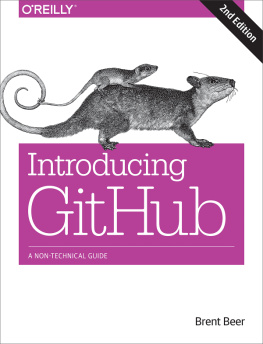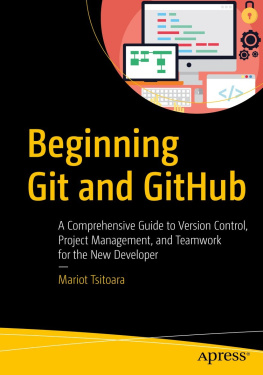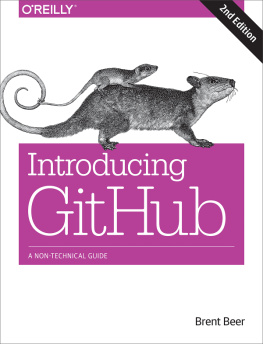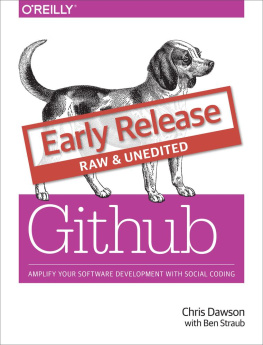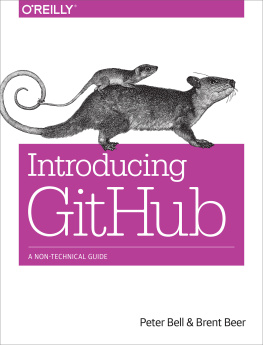Brent Beer - Introducing GitHub: A Non-Technical Guide
Here you can read online Brent Beer - Introducing GitHub: A Non-Technical Guide full text of the book (entire story) in english for free. Download pdf and epub, get meaning, cover and reviews about this ebook. year: 2018, publisher: O’Reilly Media, genre: Computer. Description of the work, (preface) as well as reviews are available. Best literature library LitArk.com created for fans of good reading and offers a wide selection of genres:
Romance novel
Science fiction
Adventure
Detective
Science
History
Home and family
Prose
Art
Politics
Computer
Non-fiction
Religion
Business
Children
Humor
Choose a favorite category and find really read worthwhile books. Enjoy immersion in the world of imagination, feel the emotions of the characters or learn something new for yourself, make an fascinating discovery.
- Book:Introducing GitHub: A Non-Technical Guide
- Author:
- Publisher:O’Reilly Media
- Genre:
- Year:2018
- Rating:3 / 5
- Favourites:Add to favourites
- Your mark:
Introducing GitHub: A Non-Technical Guide: summary, description and annotation
We offer to read an annotation, description, summary or preface (depends on what the author of the book "Introducing GitHub: A Non-Technical Guide" wrote himself). If you haven't found the necessary information about the book — write in the comments, we will try to find it.
If youre new to GitHub, this concise book shows you just what you need to get started and no more. Its perfect for project and product managers, stakeholders, and other team members who want to collaborate on a development projectwhether its to review and comment on work in progress or to contribute specific changes. Its also great for developers just learning GitHub.
GitHub has rapidly become the default platform for software development, but its also ideal for other text-based documents, from contracts to screenplays. This hands-on book shows you how to use GitHubs web interface to view projects and collaborate effectively with your team. The updated second edition covers code review, and includes updates to the desktop application, the Atom text editor, protected branches, and project management features.
- Keep track of, and work with, developers more effectively
- Learn the basics so you can contribute to your software projects
- Understand foundational Git knowledge, including commits and cloning
- Get tips on positive interaction with developers
Brent Beer: author's other books
Who wrote Introducing GitHub: A Non-Technical Guide? Find out the surname, the name of the author of the book and a list of all author's works by series.

